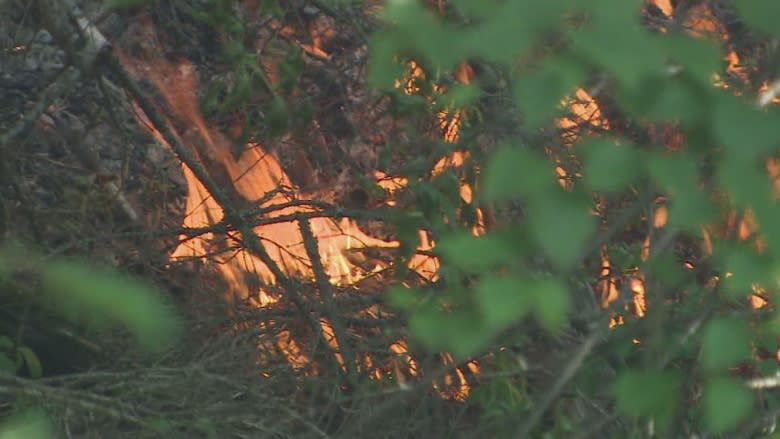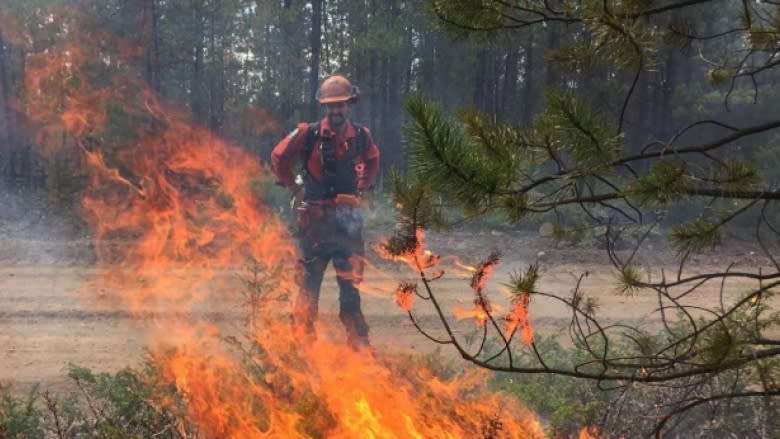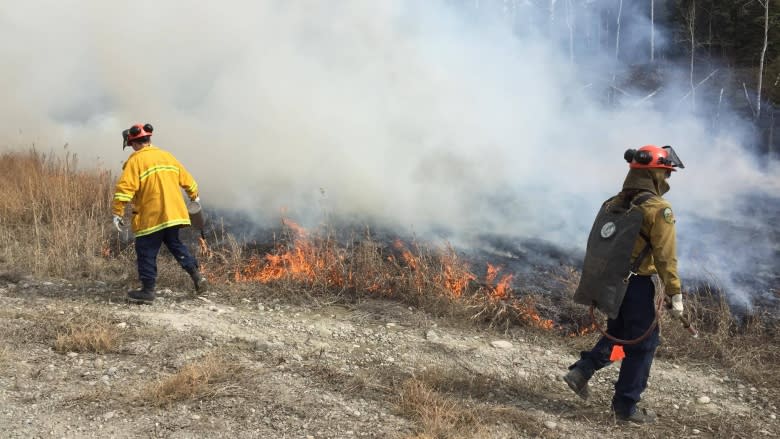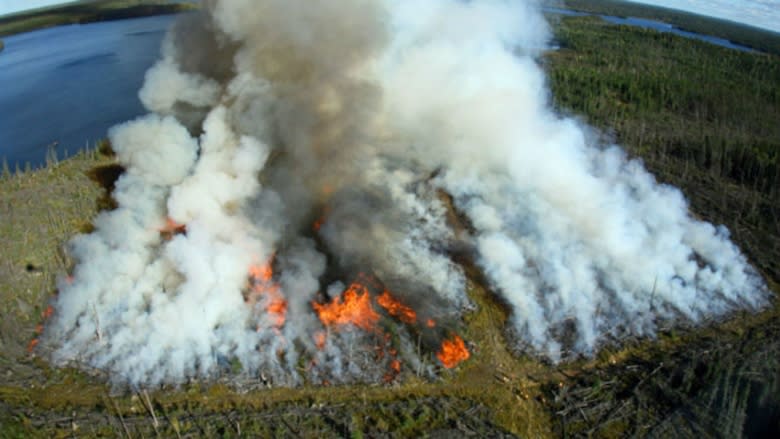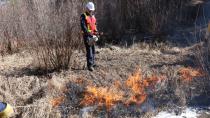Burning B.C.: Time to fight fire with fire, says expert
With hundreds of wildfires searing B.C.'s Interior and more unusually hot, dry weather on the horizon, experts warn that this may be the new fire season normal, and the best prevention — is setting preventative fires.
The traditional practice of setting preemptive or prescribed burns to get rid of underbrush and create fire stops — scorched ground to stop fire's spread — has fallen off, and experts say that's putting people at risk and costing millions.
"There's been a lot of pushback because of the smoke, but there is no 'no smoke' option in the Interior," said fire ecologist Robert Gray, of R.W. Gray Consulting, after fires displaced 14,000 people this week, leaving thousands more at the mercy of the wind.
Gray, who works for municipalities to try to fire-proof communities, says B.C. needs to at least double the number of "prescribed burns" to keep communities safer, especially if such hot, dry summers persist.
Lightning strikes
This year, a cool, wet spring gave people false comfort that the damp conditions would quench wildfire starts. But then came the relentless, bone-dry heat hitting 39 C highs — and causing more electrical storms, which set of a fierce, early fire season, say weather experts.
And it's only getting hotter and drier over the next month, according to Environment Canada.
"It's early and it doesn't bode well. I just shudder to think if it had been a normal kind of spring how bad it would be now," said David Phillips, senior climatologist for Environment and Climate Change Canada.
"These fires create their own weather. They are like heat engines," he said.
A wet spring and years of cutting back on prescribed burns contributed to grow thick undergrowth which dried into perfect tinder in places like Ashcroft, B.C., which saw only a "thimble-full" of rain in 53 days, he said.
Add to that trees left dead by pine beetles and lightning strikes, which increase up to 15 per cent with every degree of warming, and wildfires are inevitable.
"It's like kindling and it is the worst possible situation," said Phillips.
Even more troubling, emerging weather models suggest this fire season may not be an anomaly.
Phillips says patterns emerging suggest that Canadians can look south for a glimpse of the future.
"In Ontario, we look to Kentucky. Calgary looks to Denver. It's hard to know about British Columbia, but it certainly might be Northern California — we are seeing some very dry conditions there."
Fight fire with fire
Firefighting experts say the best tool to fight wildfire is burning off fuel before it's spread.
Historically park officials and the timber industry often set prescribed or planned fires to burn off undergrowth and grass that can fuel and spread a fire fast if sparked by a campfire or lightning.
But prescribed burns have fallen off from 150,000 to 200,000 hectares in the 1980s to about 5,000 hectares in recent years, Gray says.
One hectare is about the size of a sports field. By comparison, the state of Florida sanctions about two million hectares in controlled burns each year.
Last year the B.C. Ministry of Forests, Lands and Natural Resource Operations conducted 59 controlled burns.
"People do not understand the benefits of burning," said Mark Heathcott, who coordinated controlled burns for Parks Canada for more than 20 years before retiring in Alberta.
While he applauds B.C.'s FireSmart program, he would like to see prescribed burns encircle every populated area.
He believes suppressing the forest's natural cycle, which includes fire, creates the conditions for mega-fires.
For years environmental groups, tourism advocates and others lobbied against prescribed burns in B.C. after some escaped and destroyed healthy forests, killing wildlife, Gray said.
In other cases, fires were set in coastal zones where flame isn't a natural part of the ecosystem as it is in the interior and northern parts of the province — and often smoked out populated zones and caused lawsuits.
B.C. all but abandoned the practice by 2003 because of outcries and liability risks.
Smoke was the biggest issue, as it hurts air quality and affects people's health. It's become more and more difficult to get a prescribed burn approved.
Parks Canada — considered the most aggressive user of this tool — only planned 16 burns in 2016 and 19 across the country in 2017.
But fire experts say controlled fires are crucial, and every year they are put off builds more risk. B.C. spent $122-million fighting wildfires last year that burned more than 101,000 hectares.
Gray spent Monday morning working with the City of Cranbrook and a local First Nation to help organize a controlled burn.
"Our big discussion this morning was smoke. Where is it going to go? We are close to the airport. We can't smoke out the airport."
But he sees no way to avoid all smoke and protect people from out-of-control fires, especially in B.C.'s Interior.
"How do you want your smoke — wild or controlled?"
Forget rain
Climate experts agree, given emerging weather patterns, more prevention — from fire-retardant structures to more fire stops — is needed to combat fires like the inferno in Fort McMurray, Alta., in 2016.
Looking at a map of rain forecast for the next month, he's incredulous.
"I've never seen so much brown area," said Phillips, who explains that "brown" indicates below normal precipitation levels for mid-July until mid-August.
He says Canadians need to forget "normal" and expect more extremes: "stormier storms, droughtier droughts, floodier floods" and fiery fire seasons, because that might just be the new normal.



